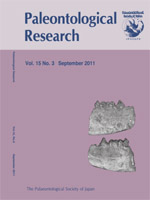Despite their small sizes (ca. 2–120 mm), chaetognaths, or arrow worms, are the most important planktonic carnivorous predators both in terms of biomass and abundance, and they represent the second most important component of modern marine ecosystems. The fossil record of chaetognaths is patchy and only consists of five Paleozoic species, which are still the object of a vigorous debate due to their unclear state of preservation.
The two main diagnostic characters for the assignment of a fossil to chaetognaths are the presence of caudal and lateral fins as well as the existence of grasping spines on both sides of the head. However, among the five putative chaetognaths from the Paleozoic, none shows simultaneously these two characters. Our new experiments on the decay process of benthic chaetognaths Paraspadella gotoi demonstrate the differential alteration of various diagnostic characters through time. Six individuals were dissected and their decay was checked regularly in separate dishes containing seawater during 72 hours. We could identify four successive stages of decay corresponding to a gradual attack of the bodies by both micro-zooplankton (ciliates) and bacteria, and we could successfully correlate them to morphologies observed in the fossil record. In conclusion, the two diagnostic characters previously used for assigning fossil chaetognaths (fins and spines) appeared insufficient, and the five fossil specimens that have been assigned to chaetognaths are systematically uncertain because they are strongly influenced by pre-diagenetic decay.





